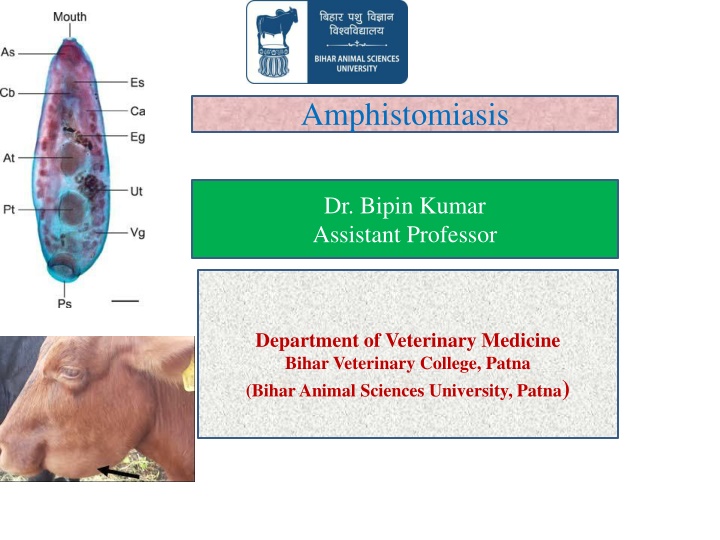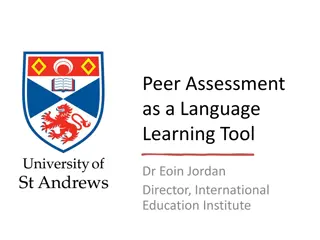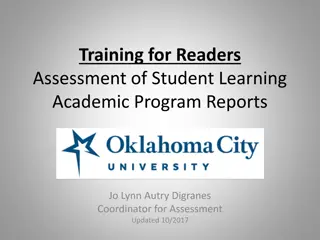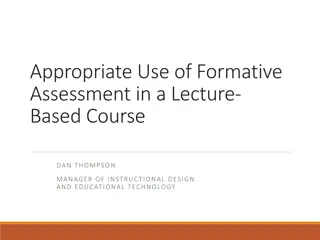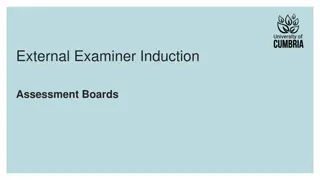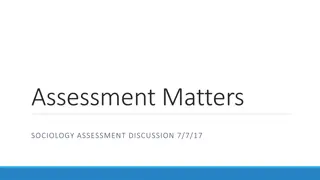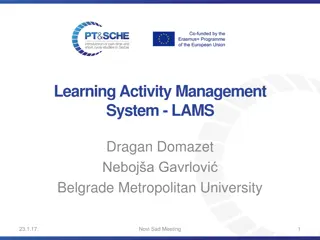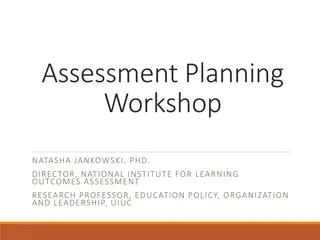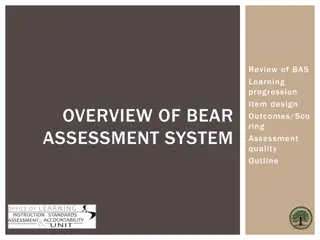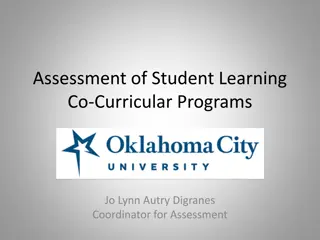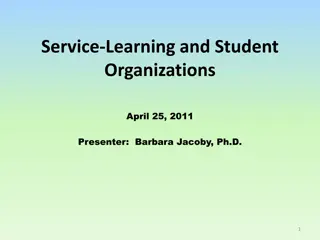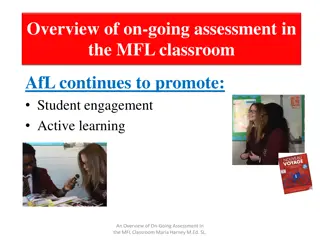Enhancing Student Learning Through Ongoing Assessment
Ongoing assessment for learning is a crucial practice that supports student improvement by providing feedback, checking understanding, and inspiring growth. It is not about testing but rather about questioning, listening, and focusing on student progress. Research confirms the positive impact of formative assessment on learning outcomes, emphasizing the need for teachers to adjust instruction based on assessment results to make it truly formative.
Uploaded on Feb 21, 2025 | 0 Views
Download Presentation

Please find below an Image/Link to download the presentation.
The content on the website is provided AS IS for your information and personal use only. It may not be sold, licensed, or shared on other websites without obtaining consent from the author.If you encounter any issues during the download, it is possible that the publisher has removed the file from their server.
You are allowed to download the files provided on this website for personal or commercial use, subject to the condition that they are used lawfully. All files are the property of their respective owners.
The content on the website is provided AS IS for your information and personal use only. It may not be sold, licensed, or shared on other websites without obtaining consent from the author.
E N D
Presentation Transcript
Amphistomiasis Dr. Bipin Kumar Assistant Professor Department of Veterinary Medicine Bihar Veterinary College, Patna (Bihar Animal Sciences University, Patna)
Also known as Stomach flukes or Conical flukes. It is a parasitic disease of cattle and sheep and humans caused by immature helminthic flatworms. Infection occurs through ingestion of contaminated vegetables and raw meat, in which the viable infective metacercaria are deposited from snails, which are the intermediate hosts.
Etiology/Epidemiology Name of trematode Host Cattle Location Forestomach Paramphistomum gotoi Cattle Forestomach Paramphistomum cervi Cotylophoran cotylophorum Sheep, Goat & Cattle Rumen and reticulum Cattle &Buffalo Bile duct, Gall bladder & Duodenum Gigantocotyle explanatum Sheep,Cattle &Buffalo Rumen and reticulum Gastrothylax crumenifer Gastrodiscus aegypticus Horse and pig Large and small intestine
Transmitted by various species of snails; Planorbis, Bulinus Pseudosuccinea, Fossaris Indoplanorbis, Lymnaea Pygmanisas, Glyptanisus & Cleopatra
Factors influencing ourbreak of amphistomiasis; Management Environmental factors Intermediate host Definitive host The egg contain the miracidium when passed in the faeces. Management Animals are reared in extensive systems of management Grazing near pond area/ other natural resources, especially - drier months Snail population - concentrated more Fresh palatable grasses are more Favour for encystation of metacercariae Attracts animals
Temperature embryonation (miracidium) & maturation of cercariae (27C) Light - Strong light influences release of cercariae from snail Intermediate host Availability of suitable snail Young snails are highly susceptible than adult Multiplication of snails take places in warm, watery environment Definitive host Young animals are highly susceptible than adult Preinfection give resistant The egg contain the miracidium when passed in the faeces The egg do not hatch
PATHOGENESIS AND CLINICAL SIGNS Adult flukes Forestomach large number of worms Not much pathogenic changes Bile duct & gall bladder Superficial Haemorrhage Liver Fibrosis Immature flukes (Pitto) Duodenum, upper ileum-plug feeder: Plug intestinal mucosa Haemorrhages and necrosis (Haemorrhagic duodenitis) Embedded in mucosa/ muscularis Clinical signs Fetid diarrhoea Marked weakness Thirsty and drink more water
DIAGNOSIS, TREATMENT AND CONTROL Diagnosis Based on history and Clinical signs Faecal examination Gross presence of immature worms in fluid faeces Microscopic - Presence of typical egg (Upperculated)
Treatment Bithionol sulphoxide 40 mg/ kg (activity against Immature 100%) Resorantol 65 mg / kg ( Immature 65% &Mature 100%) Niclosamide - 90 mg / kg (Immature 99.9% &Mature 8%) Niclofolan - 6 mg / Kg (Immature 96% & Mature 43%) Oxyclozanide 18.7 mg / kg for two days (Immature & Mature - 100 %) Hexachlorophene 20 mg/ kg - single dose Resorantol and Oxyclozanide are the drug of choice for both immature and mature Amphistomes
Control Regular deworming. Drainage of low lying area and destruction of snails. Pasture management.
